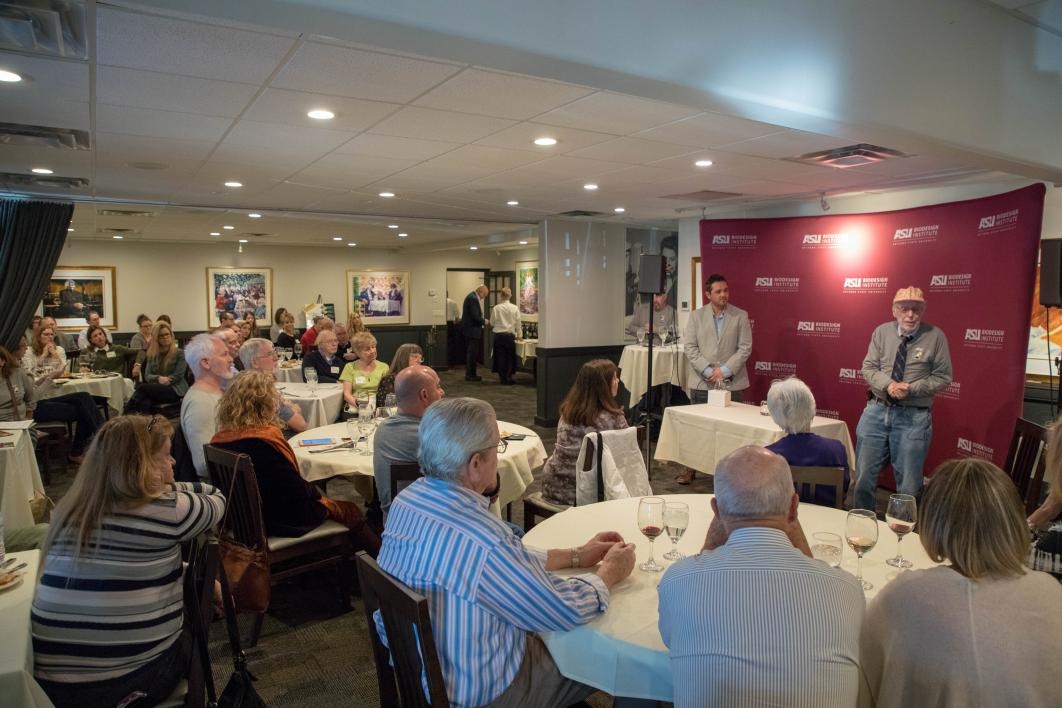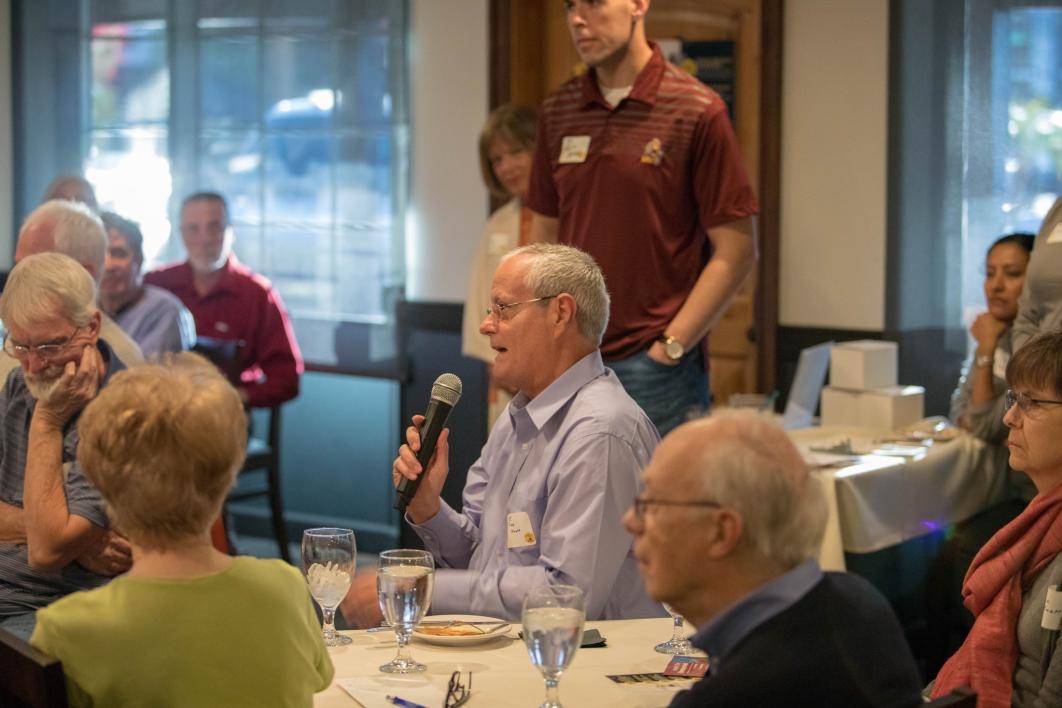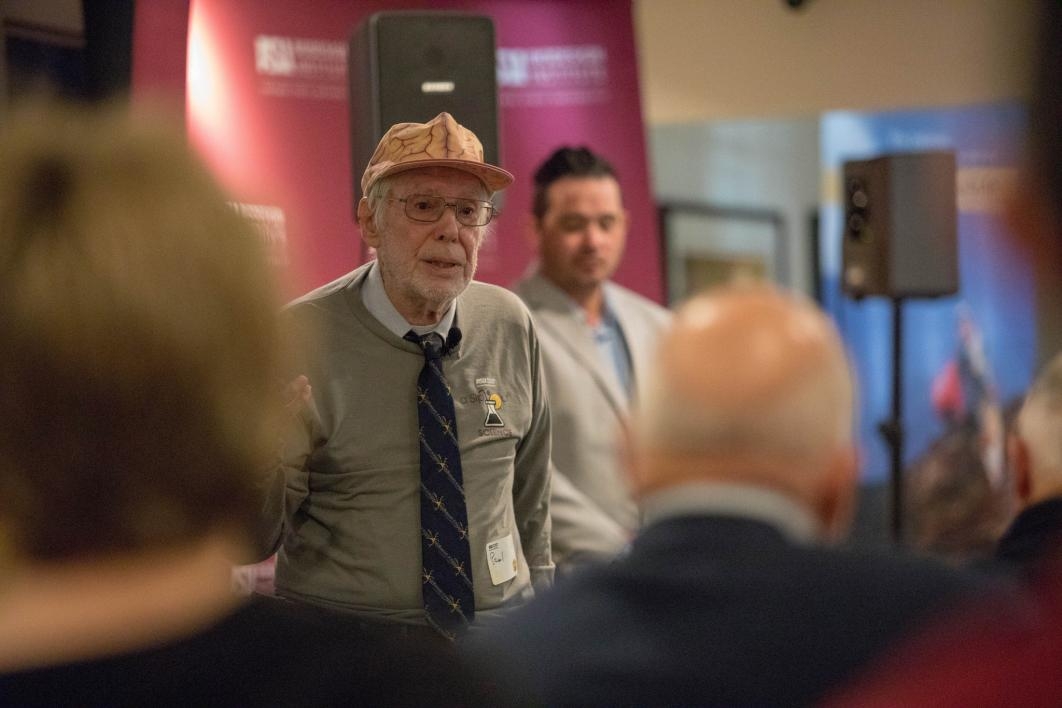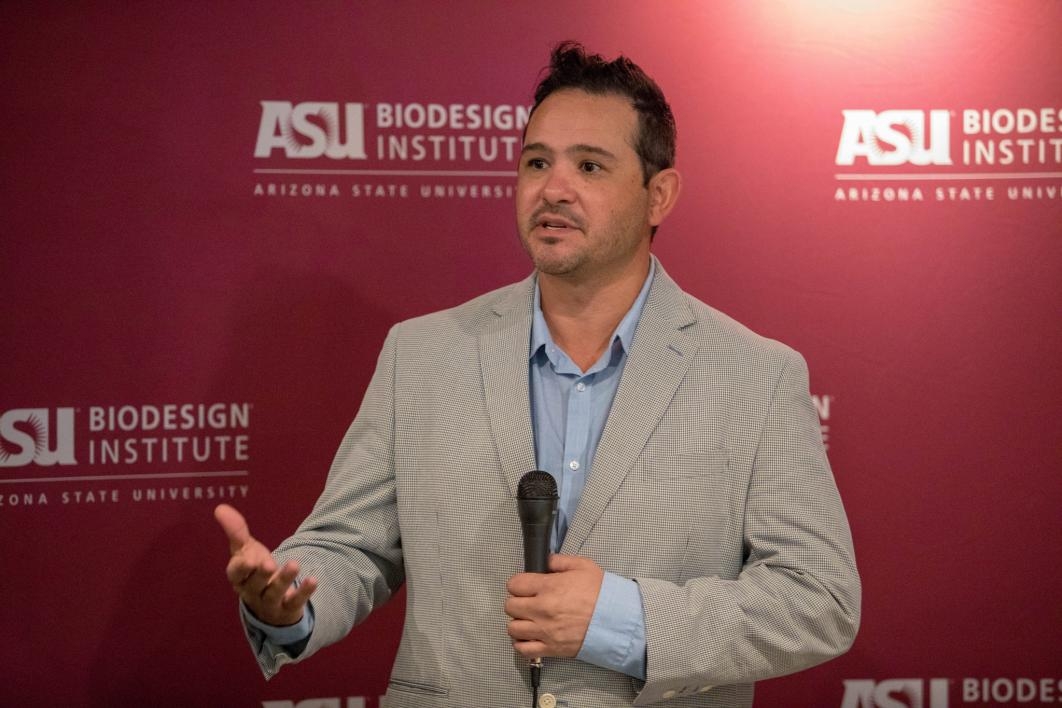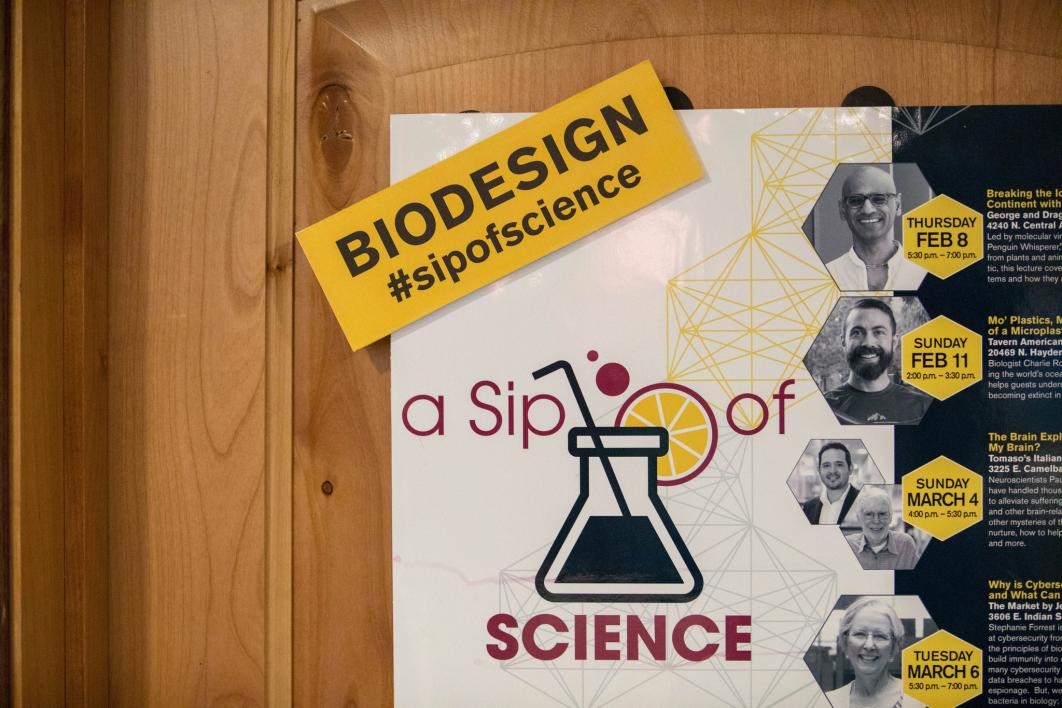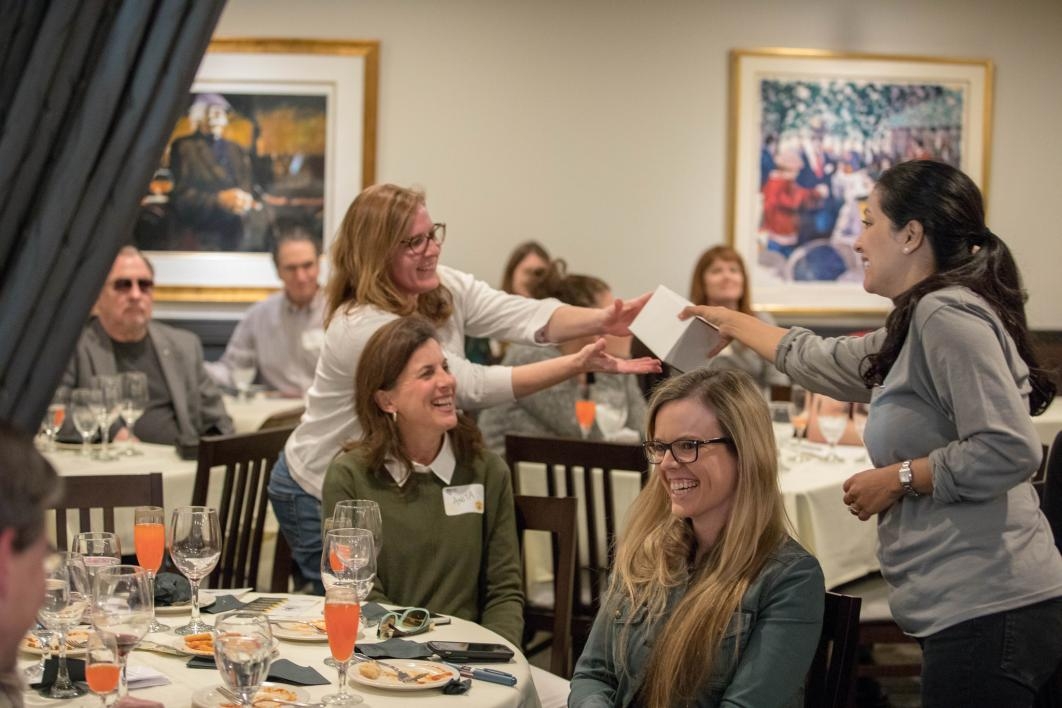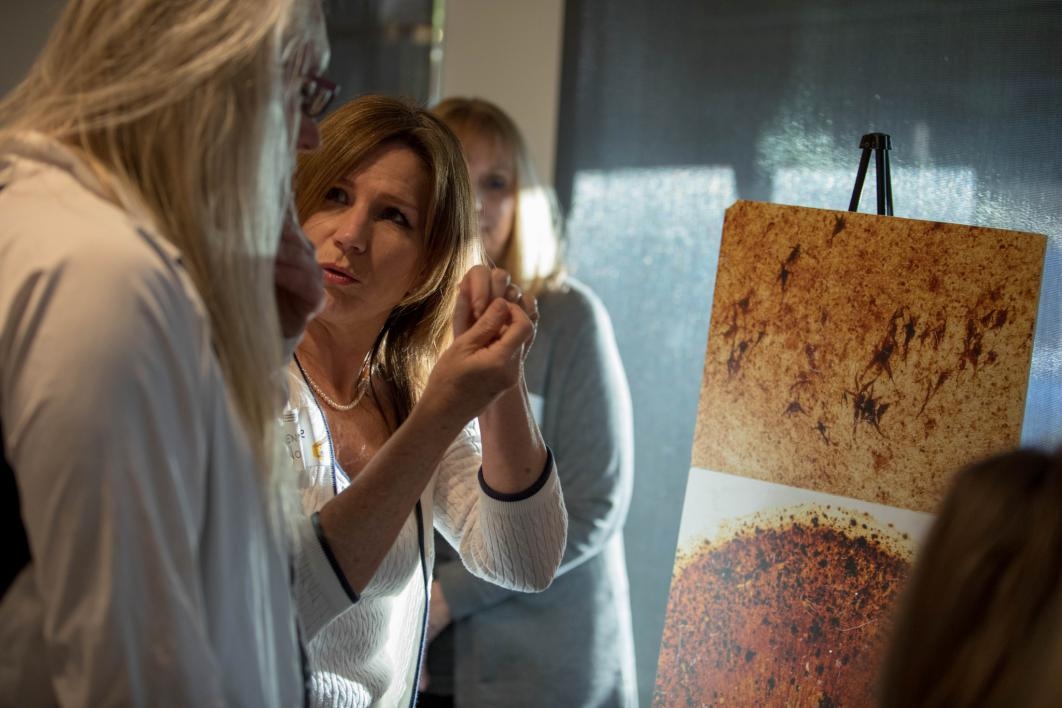Biodesign researchers lead community dialogue on Alzheimer’s disease research
Neuroscientists' talk is third of six events in Biodesign's 'A Sip of Science' series
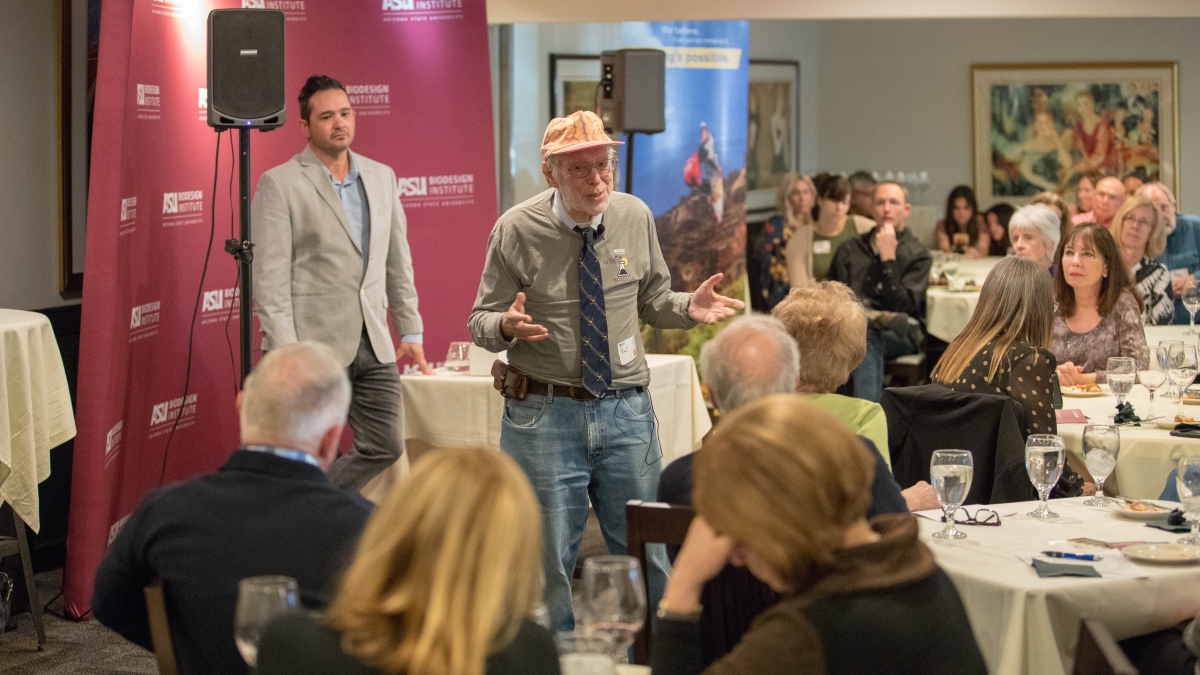
Biodesign neuroscientists Paul Coleman and Diego Mastroeni spoke about Alzheimer's and dementia at "A Sip of Science" on Sunday. Photo by Ben Petersen
Nearly 80 people attended the Biodesign Institute’s latest “Sip of Science” event Sunday evening at Tomaso's restaurant in Phoenix. Neuroscientists Paul Coleman and Diego Mastroeni took questions from the audience about the latest Alzheimer’s science and efforts to prevent, diagnose and treat the disease.
“The Brain Explained” was the third event of “A Sip of Science,” a new community dialogue hosted by the Biodesign Institute at Arizona State University. It brings leading scientists to restaurants around the Valley to speak with the public over drinks and appetizers. Coleman and Mastroeni are research faculty at the ASU-Banner Neurodegenerative Research Center at the Biodesign Institute.
“By the time we are 80 years old, we have a 50 percent chance of getting some kind of dementia, so you can see why the kind of research Paul and I are doing is so important,” Mastroeni said. “The work that we do is not just research. It is very passionate research.”
Mastroeni began the discussion explaining why he studies Alzheimer’s. “My best friend growing up was my grandfather,” he said. Mastroeni has a poignant memory of having to place his beloved grandfather into a nursing home when Alzheimer’s made it impossible for his grandfather to function without assistance. “As a 16-year-old boy, I knew this was what I was going to do for the rest of my life. I would try to figure out a way that no other son or daughter would ever have to take their father, mother, sister or brother into a facility like I did.”
Coleman and Mastroeni highlighted new ideas to detect Alzheimer’s early and potentially treat the disease. They shared tips that could reduce the risk of getting Alzheimer’s or dementia, like a healthy diet, regular exercise and getting involved in new activities as you get older to build new pathways in the brain.
Mastroeni explained that doing crossword puzzles and playing bridge can be a great start, but not if it’s every day. “The idea is to regularly introduce something new in order to build neural pathways. Painting, woodworking, chess, dancing, yoga and birdwatching are worth considering.”
Three more science chats will be held at restaurants in Camelback, downtown Phoenix, and Chandler through May. They cover topics from cancer to cybersecurity and more information can be found on the Biodesign website.
More Science and technology

SpaceHACK highlights student solutions to environmental challenges, digital divide
By Adrianna Nine About 250 students from around the world convened online and at Arizona State University on March 22 for the…

New AI for a new era of discovery
As the legend goes, in 1665, Sir Isaac Newton sat in his garden at Woolsthorpe Manor in England and looked on as a lone apple…

ASU receives 3 awards for research critical to national security
Three researchers in the Ira A. Fulton Schools of Engineering at Arizona State University have received grant awards under the …
